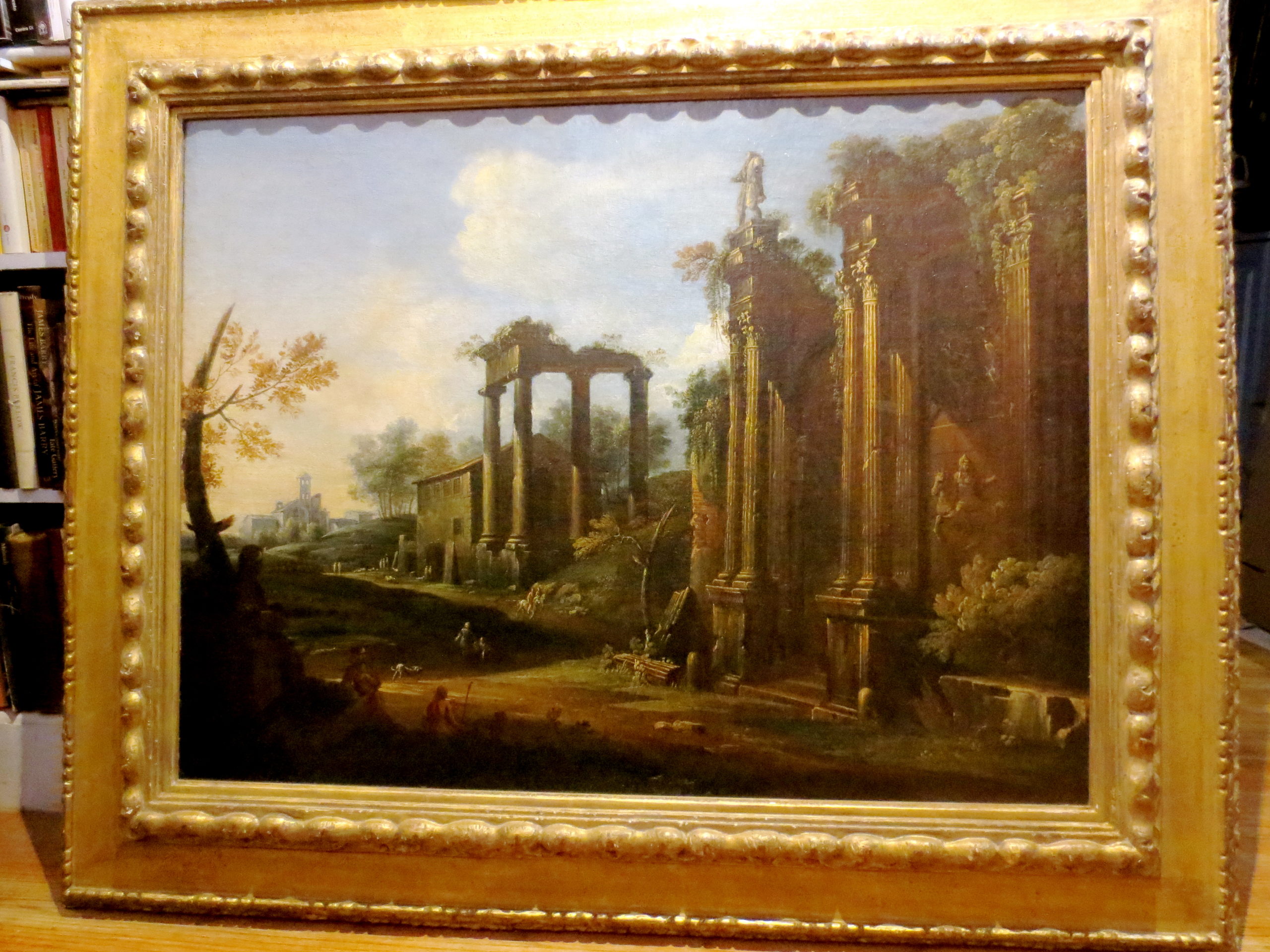The angular recession from edge to center of a rhythmic toggle between columns and interstice gaps and space was a composition type that Codazzi developed and varied as a specific genre within his larger repertoire emergent in the 1650s and pursued for about a decade. (For which cf. variant in Prague Castle, mid-1650s VC 110; CA, Cat. 9b, private collection, Pistoia). The best of these works from Codazzi’s first maturity achieve a stolid dignity that would later be absorbed both by increased shadows and intermittent brighter colors in the service of more profuse architectural addenda and increased scale and activity of staffage in progression from core Baroque to nascent Rococo.
A two-stage drama is implicitly set as an antique colonnade receding to a cluster of peasant houses and a noble castle. In themselves, the columns were an emblematic commonplace in the visual arts that indicated aspects of personal character in portraiture, while as architectural portions they remain as memorials of human achievement, and as steadfast templates of the rational constitution of the emergent better aspirations and achievements of the present.
There are two excellent and thoroughly well illustrated and readable studies of the entire phenomenon of the appreciation of the achieved legacy of a past culture as part of our present aspirations: Rose Macauley, Pleasure of Ruins, 1964 and frequently reprinted; and Paul Zucker, The Fascination of Decay Ruins: Relic, Symbol, Ornament, New York, 1968.

